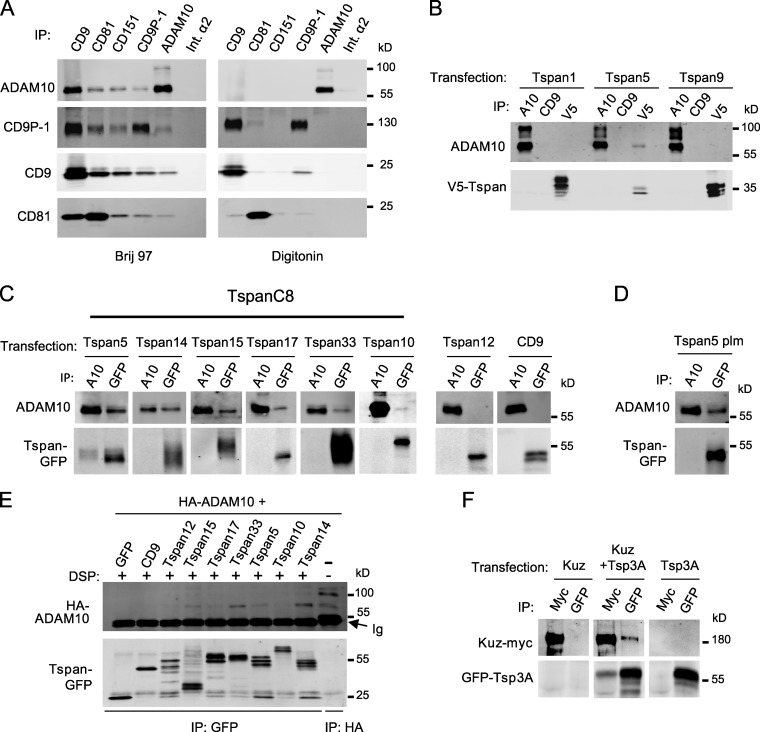Figure 1.
Several TspanC8 tetraspanins interact with ADAM10 in a digitonin-resistant manner. (A) HCT116 cells were lysed in the presence of Brij 97 or digitonin before immunoprecipitation with the indicated mAb. The composition of the complexes was analyzed by Western blot. This experiment is representative of several experiments performed with various cell lines. Int.α2: integrin α2. (B) PC3 cells were transiently transfected with V5-tagged Tspan1, Tspan5, or Tspan9 and interaction with ADAM10 was analyzed by coimmunoprecipitation after digitonin lysis and Western blot using mAb to ADAM10 (top) or V5 tag (bottom). A10: ADAM10. (C) PC3 cells were transiently transfected with the indicated GFP-tagged tetraspanins and interaction with ADAM10 was analyzed by coimmunoprecipitation after digitonin lysis and Western blot using mAb to ADAM10 (top) or GFP (bottom). (D) Analysis of ADAM10 interaction with nonpalmitoylatable Tspan5 (Tspan5-plm) after digitonin lysis. (E) HEK 293 cells were transfected with HA-tagged ADAM10 and plasmids encoding either GFP or the indicated GFP-tagged tetraspanins. After cross-linking with DSP, the different tetraspanins were immunoprecipitated using the anti-GFP antibody. The samples were electrophoresed under reducing conditions to break the cross-linker, and the presence of ADAM10 cross-linked to the tetraspanins was detected by Western blot using an anti-HA antibody (top). The efficient immunoprecipitation of the different tetraspanins is controlled by immunoblotting the samples using an anti-GFP antibody (bottom). (F) S2 cells were transiently transfected with plasmids encoding Kuz-myc and GFP-Tsp3A, alone or in combination, and lysed using digitonin. The interaction between Kuz and Tsp3A was analyzed by immunoprecipitation and Western blotting using anti-Myc (Kuz) and anti-GFP (Tsp3A) antibodies. All experiments were performed at least twice.

